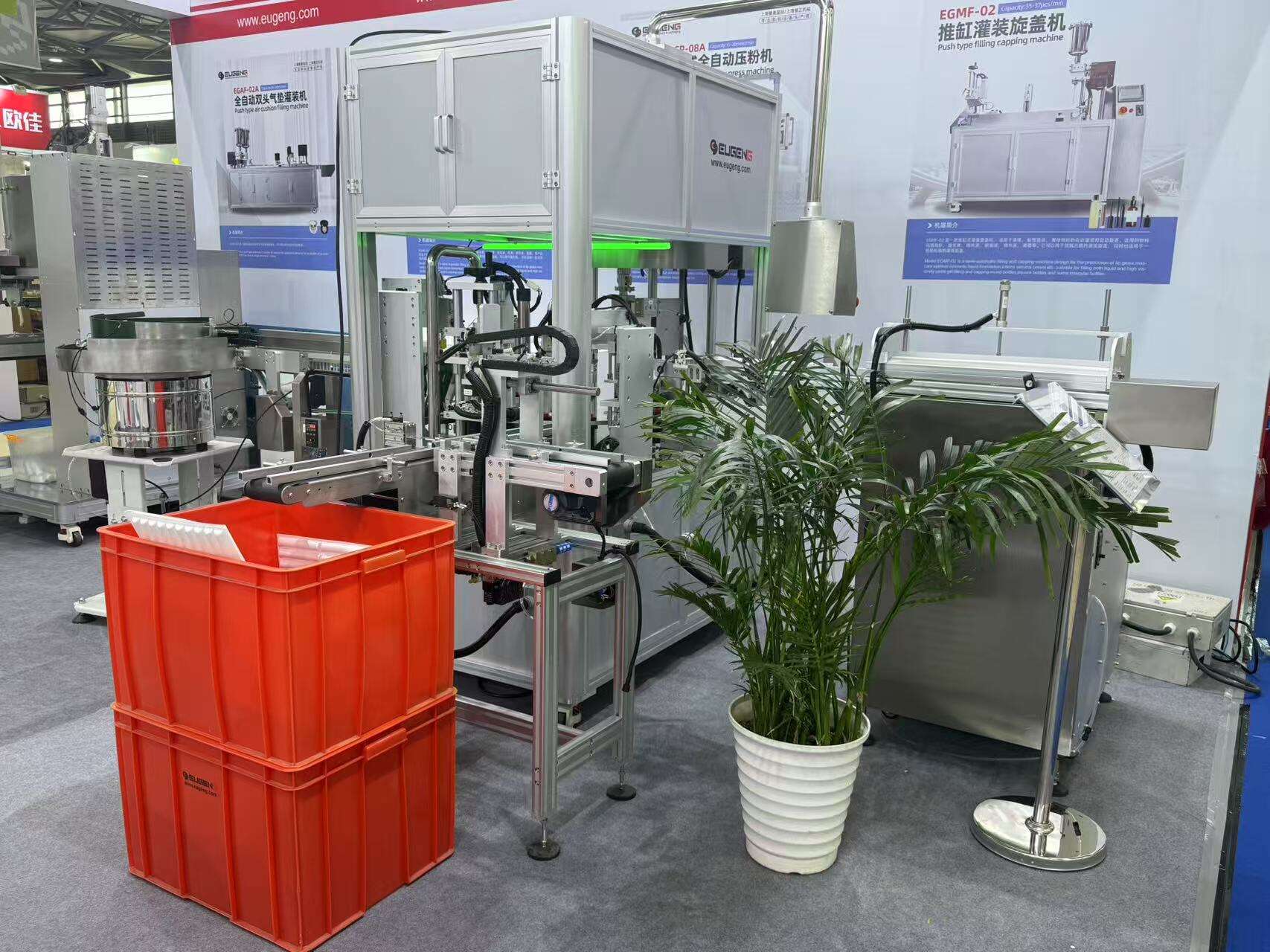Enhancing Production Efficiency with Automated Systems
Automation significantly enhances production efficiency by accelerating packaging line speeds through technology. Automated systems, by reducing manual intervention, can remarkably increase packaging line speeds. High-speed conveyors and robotic arms are integral to this process, streamlining operations and achieving throughput rates of up to 1200 units per minute, as seen in industry reports. This technological integration ensures manufacturers can meet high market demand efficiently, demonstrating the compelling advantages of automated filling and capping processes. For a more detailed look at how these technologies benefit the manufacturing sector, consider exploring more references in the industry.
Accelerating Packaging Line Speeds
Automated systems are a game-changer in maximizing packaging line speeds and overall efficiency in manufacturing. By minimizing manual intervention, they offer smoother operations and faster throughput, essential in today's competitive market. Technologies such as high-speed conveyors and robotic arms revolutionize packaging processes, allowing throughput rates to reach impressive figures of up to 1200 units per minute. This innovation not only boosts production capabilities but also ensures manufacturers can respond to market demands swiftly. It's fascinating to see how integration with automated filling and capping equipment has become pivotal for achieving these speeds, showcasing the substantial benefits of embracing automation technologies.
Minimizing Labor Costs Through Automation
The advantages of automation in reducing labor costs are undeniable. Implementing automated systems can drastically decrease the number of manual operators needed on the production line, thereby significantly cutting labor expenses. Industry studies reveal that businesses have successfully reduced labor costs by as much as 30% through automation. This reduction goes beyond mere cost-savings; it allows companies to reallocate human resources towards more strategic and value-driven tasks, enhancing overall operational efficiency. It is noteworthy how this shift not only boosts productivity but also prioritizes employee satisfaction, marking a new era where automation and human resources coalesce for better organizational outcomes.
Achieving Unmatched Precision in Packaging Operations
Error Reduction Through Machine Vision Technology
Machine vision technology is revolutionizing packaging operations by ensuring quality and consistency through precise inspections. By implementing this technology, manufacturers can achieve over a 90% reduction in packaging errors, as shown in various manufacturing settings. Machine vision systems meticulously inspect every product on the line, utilizing AI-driven machine learning algorithms that enhance the accuracy of quality checks and defect identification. This technological advancement not only ensures the highest consistency in product quality but also addresses the increasing demand for error-free packaging, crucial in competitive markets.
Maintaining Strict Quality Control Standards
Implementing automated systems is essential to uphold rigorous quality control standards within packaging operations. Such systems continuously monitor production metrics, ensuring compliance with regulatory and safety standards across industries like pharmaceuticals and food. By providing real-time data tracking, these advanced systems enable manufacturers to make proactive adjustments, preventing deviations from established quality benchmarks. This capability is vital for maintaining adherence to safety standards and guaranteeing that consumers receive products that meet high-quality specifications. Furthermore, automated systems facilitate a streamlined process for manufacturers to align with evolving industry regulations and consumer expectations.
Cost-Effective Solutions for Modern Manufacturing
Long-Term Savings vs Initial Investment
In the realm of modern manufacturing, automated systems often present a significant initial investment. However, the long-term savings these systems provide typically justify the upfront costs. By conducting a detailed cost-benefit analysis, manufacturers can understand how investment in automation allows them to recuperate their initial expenditure within two to three years, thanks to reduced operational costs. Furthermore, these systems are designed to minimize expensive downtimes, thus enhancing product output and efficiency. Automation, therefore, isn't just an expenditure; it's a strategic move towards cost-effective manufacturing.
Reducing Material Waste in Filling Processes
Automation is a powerful tool in reducing material waste, especially in filling processes. Precise filling technology optimizes resource usage, significantly minimizing waste. Studies show that automated filling processes can reduce waste by up to 20%, thereby directly impacting profitability. Techniques such as volumetric and gravimetric filling ensure that the exact amount of product is used, effectively preventing overfilling and maintaining high efficiency. Embracing automation in filling processes thus aids in reducing costs while making operations more environmentally friendly and sustainable.
Industry-Specific Applications of Automated Packaging
Pharmaceutical Grade Sterilization Requirements
In the pharmaceutical sector, automation in packaging systems is crucial for meeting stringent sterilization requirements. Automated systems help companies comply with international regulations such as those set by the FDA and EMA, ensuring that products remain both safe and effective. Moreover, advanced sterilization technologies, like ethylene oxide and radiation, are integrated into automated packaging processes to maintain the highest levels of product integrity. These systems are designed to operate in controlled environments, making them indispensable for handling sensitive pharmaceutical products.
Food Industry Compliance and Safety
Automation is pivotal in the food industry for maintaining compliance with stringent health and safety regulations. Automated packaging solutions are specifically designed to adhere to hygiene standards that are critical to preventing contamination. Technologies such as vacuum packaging and modified atmosphere packaging (MAP) play significant roles in prolonging shelf life while ensuring the freshness of the product. These innovations not only enhance safety but also demonstrate a commitment to quality in each packaged item, reinforcing consumer trust and satisfaction.
High-Volume Chemical Processing Demands
The automation of high-volume chemical processing meets industry demands through enhanced speed and accuracy, significantly reducing human error. These robust systems are engineered to safely manage hazardous materials, ensuring safety for workers while maximizing operational efficiency. Automating the filling and capping process improves the ability to handle a range of chemical viscosities and volumes, optimizing production capacity. This integration not only streamlines workflow but also increases the overall productivity of chemical manufacturing operations, showcasing the numerous advantages of automated filling and capping in manufacturing.
Sustainable Manufacturing Through Automated Processes
Optimizing Resource Utilization
Automation is pivotal in optimizing resource utilization within manufacturing processes. By enhancing process efficiency, we can reduce material consumption significantly. One of the key benefits of automation is the integration of data analytics, allowing manufacturers to closely monitor resource usage and pinpoint areas for improvement. This proactive approach not only maximizes resource efficiency but also supports sustainable practices, leading to a significant decrease in both carbon footprints and energy consumption. With the ongoing global focus on sustainability, automating resource utilization is more crucial than ever.
Supporting Eco-Friendly Packaging Initiatives
Embracing automated packaging systems enables us to strongly support eco-friendly initiatives by prioritizing the use of biodegradable and recyclable materials. This transition is aligned with increasing consumer preferences for sustainable packaging, reflecting a clear commitment to environmental responsibility. Moreover, innovations such as reducing packaging sizes and developing reusable packaging options further contribute to lowering waste generation. By integrating these practices, businesses not only satisfy evolving market demands but also play a critical role in promoting eco-friendly packaging initiatives.
FAQ Section
What is the impact of automation on production efficiency?
Automation significantly enhances production efficiency by accelerating packaging line speeds and reducing manual intervention, enabling quicker and more consistent operations, such as achieving throughput rates of up to 1200 units per minute.
How does automation affect labor costs in manufacturing?
Automated systems can drastically decrease the number of manual operators needed, resulting in labor cost reductions by as much as 30%, allowing businesses to reallocate resources towards strategic tasks.
What technologies contribute to error reduction in packaging?
Machine vision technology, utilizing AI-driven algorithms, ensures quality and consistency by performing precise inspections, achieving a reduction in packaging errors by over 90%.
Why should manufacturers invest in automated systems despite initial costs?
Long-term savings and efficiency improvements from automation typically justify the initial investment, allowing manufacturers to recover costs within two to three years through reduced operational expenses and minimized downtimes.
How does automation promote sustainable manufacturing practices?
Automated processes optimize resource utilization and support eco-friendly initiatives, such as using biodegradable materials, reducing waste generation, and decreasing energy consumption and carbon footprints.
Table of Contents
- Enhancing Production Efficiency with Automated Systems
- Accelerating Packaging Line Speeds
- Minimizing Labor Costs Through Automation
- Achieving Unmatched Precision in Packaging Operations
- Cost-Effective Solutions for Modern Manufacturing
- Industry-Specific Applications of Automated Packaging
- Sustainable Manufacturing Through Automated Processes
-
FAQ Section
- What is the impact of automation on production efficiency?
- How does automation affect labor costs in manufacturing?
- What technologies contribute to error reduction in packaging?
- Why should manufacturers invest in automated systems despite initial costs?
- How does automation promote sustainable manufacturing practices?

 EN
EN
 AR
AR BG
BG HR
HR CS
CS DA
DA NL
NL FI
FI FR
FR DE
DE EL
EL HI
HI IT
IT JA
JA KO
KO NO
NO PL
PL PT
PT RO
RO RU
RU ES
ES SV
SV TL
TL IW
IW ID
ID LV
LV LT
LT SR
SR UK
UK VI
VI HU
HU TH
TH TR
TR FA
FA MS
MS UR
UR BN
BN LO
LO LA
LA PA
PA
